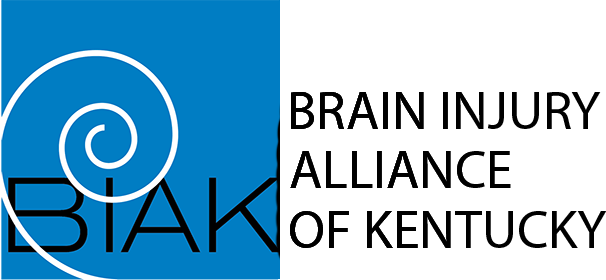Understanding TBI: Part 4 – The Impact of a Recent TBI on Family Members and What They Can Do To Help With Recovery

How does brain injury affect family members?
For most family members, life is not the same after TBI. We want you to know that you are not alone in what you are feeling. While everyone’s situation is a bit different, there are some common problems that many family members experience such as less time for yourself, financial difficulties, role changes of family members, problems with communication, and lack of support from other family members and friends. These are just some of the problems that family members may face after injury. Sometimes these problems can seem too much and you may become overwhelmed, not seeing any way out. Family members have commonly reported feeling sad, anxious, angry, guilty, and frustrated.
Ways to reduce stress
Since the injury, you have likely been under a great deal of stress. A little stress is part of life, but stress that goes on for a long time can have a negative effect on the mind and body.
Stress is related to medical problems such as heart disease, cancer, and stroke.
- Stress can make you do things less well because it affects your ability to concentrate, to be organized, and to think clearly.
- Stress also has a negative effect on your relationships with other people because it makes you irritable, less patient, and more likely to lash out at others.
- Stress can lead to depression and/or anxiety.
If you are under constant stress, you are not going to be as helpful to your injured family member or anyone else. If you do not take the time to rest and care for yourself, you will get fewer things done, which will lead to more stress. If you won’t do this for yourself, do it for your injured family member. They will be better off if you are healthy and rested. Here are some suggestions for ways to reduce stress and stay healthy. These things have worked for many people, but not all of them may work for you. The important thing is that you begin thinking about ways to improve your life.
Learn to relax
Taking a few moments to relax can help you be more ready for the things you need to do. Learning to relax is not easy, especially in your current situation. There are relaxation techniques that can help you such as breathing deeply and focusing on your breathing, stating a word or phrase that has positive meaning (e.g. peace), or visual imagery. In order to train your body and mind to relax, you need to practice often. Don’t give up if it doesn’t work right away. If you keep practicing these techniques, you will feel more relaxed in the long run, and you will find that you’re able to function better in all areas of your life.
Learn which coping strategies work for you
No matter what was going on in your life before, the injury has caused changes. You may never have experienced anything similar to the injury, and some of your usual coping strategies may not work in your current situation. The best thing that you can do for yourself is to be open to trying new ways of coping and find out what works for you.
Some coping strategies that others have found helpful:
- Taking time for yourself
- Keeping a regular schedule for yourself
- Getting regular exercise such as taking a 20-30 minute walk each day
- Participating in support groups
- Maintaining a sense of humor
- Being more assertive about getting the support you need
- Changing roles and responsibilities within the family
Learn how to reward yourself
Everyone needs something to look forward to. You’ll probably say, “I have no time; it’s impossible.” Just remember that you will be more ready to do the things you have to do if you take some time to do some things that you want to do. Even if you have very limited time, you can find some small way to reward yourself. Promise yourself a cup of your favorite coffee or an opportunity to watch a good TV show or read something you enjoy.
Problem-solving for caregivers
Sometimes you may feel overwhelmed by problems. There may be so many problems that you’re not sure which one to tackle first. You can only solve one problem at a time, so pick one. Use the problem solving steps below to find a good solution. Try to choose a smaller problem to solve first. This will give you practice and make you more confident about solving bigger problems. If you deal with problems in this way, they may seem easier to handle.
Steps in Problem Solving
- Identify the problem: What is the problem? Define it as clearly and specifically as possible. Remember that you can only solve one problem at a time.
- Brainstorm solutions: What can be done? Think of as many things as you can. Don’t worry about whether they sound silly or realistic. This is the time to think about all possibilities, even the ones that you don’t think will happen. Be creative.
- Evaluate the alternatives: Now you will start thinking about the consequences of the ideas you came up with in Step 2. For each idea, make a list of positives on one side of the page and a list of negatives on the other side.
- Choose a solution: Pick the solution with the best consequences based on your list of positives and negatives. Keep in mind that more positives than negatives is not always the best rule. Sometimes you will have one negative that outweighs many positives.
- Try the solution: Try out the idea you have chosen. Give it more than one chance to work. If it doesn’t work right away, try to figure out why. Was there some consequence you didn’t think of? Is there another problem in the way that could be easily solved?
- If your first solution doesn’t work, try another one: Don’t give up. Everything doesn’t always work out the first time. You can learn from your mistakes; they may help you to choose a better solution next time.
Ways family members can help the injured person
The treatment team can provide you with guidance in how to help the person while not giving them too much or too little assistance. Attending therapy when possible and working with the therapists and nurses are the best ways to learn to help the person before discharge from the hospital.
The following recommendations are intended to help families and caregivers care for their loved one once they have returned home. Not all of the following recommendation may apply to your situation.
Provide structure and normalcy to daily life
- Establish and maintain a daily routine – this helps the person feel more secure in their environment.
- Place objects the person needs within easy reach.
- Have the person rest frequently. Don’t let the person get fatigued.
- Be natural with the person and help them to maintain their former status in the family.
Communication is important to the person’s recovery. Although they may not be able to speak, they should continue to be involved in as normal a social world as possible. - Include the person in family activities and conversations.
- Keep a calendar of activities visible on the wall. Cross off days as they pass.
- Maintain a photo album with labeled pictures
of family members, friends, and familiar places.
Provide support in a respectful way
- Try not to overwhelm the person with false optimism by saying statements like “You will be alright” or “You will be back to work in no time.
- Point out every gain the person has made since the onset of the injury. Avoid comparing speech, language or physical abilities prior to the injury with how they are now. Look ahead and help the person to do the same.
- Treat the person as an adult by not talking down to them.
- Respect the person’s likes and dislikes regarding food, dress, entertainment, music, etc.
- Avoid making the person feel guilty for mistakes and accidents such as spilling something.
- If the person has memory problems, explain an activity as simply as possible before you begin. Then as you do the activity, review with the person each step in more detail.
Avoid over-stimulation
Agitation can be heightened by too much activity and stimulation.
- Restrict the number of visitors (1 or 2 at a time).
- Not more than one person should speak at a time.
- Use short sentences and simple words.
- Present only one thought or command at a time and provide extra response time.
- Use a calm, soft voice when speaking with the person.
- Keep stimulation to one sense (hearing, visual or touch) at a time.
- Avoid crowded places such as shopping malls and stadiums.
Safety Tips
The person who has confusion or impaired judgment may be unable to remember where dangers lie or to judge what is dangerous (stairs, stoves, medications). Fatigue and inability to make the body do what one wants can lead to injury. Therefore it is very important that a brain injured person live in an environment that has been made as safe as possible. The following are some safety guidelines to use in the home:
- Keep clutter out of the hallway and off stairs or anywhere the person is likely to walk. Remove small rugs that could cause tripping or falls.
- Remove breakables and dangerous objects (matches, knives, and guns).
- Keep medications in a locked cabinet or drawer.
- Get the doctor’s consent before giving the person over-the-counter medication.
- Limit access to potentially dangerous areas (bathrooms, basement) by locking doors if the person tends to wander. Have the person wear an identification bracelet in case he or she wanders outside.
- Keep the person’s bed low. If they fall out of the bed, you may want to place the mattress
on the floor or install side rails. - Make sure rooms are well lit, especially in the evening. Night-lights can help prevent falls.
- Have someone stay with the person who is severely confused or agitated.
- Keep exit doors locked. Consider some type of exit alarm, such as a bell attached to the door.
- Consider a mat alarm under a bedside rug to alert others if the person gets up during the night.
Things that can be more dangerous after a TBI and should be resumed only after consulting a health care professional: contact sports, horseback riding, swimming, hunting or access to firearms, power tools or sharp objects, riding recreational vehicles, and cooking without supervision.
Individuals with brain injury should receive permission from a health care professional prior to using alcohol or other substances at any point after their injury. Also, NO DRIVING until approved by your doctor.
More in the Understanding TBI Series
- Part 1 – What happens to the brain during injury and the early stages of recovery from TBI?
- Part 2 – Brain injury impact on individuals’ functioning
- Part 3 – The Recovery Process
Authorship
Understanding TBI was developed by Thomas Novack, PhD and Tamara Bushnik, PhD in collaboration with the Model System Knowledge Translation Center. Portions of this document were adapted from materials developed by the University of Alabama TBIMS, Baylor Institute for Rehabilitation, New York TBIMS, Mayo Clinic TBIMS, Moss TBIMS, and from Picking up the pieces after TBI: A guide for Family Members, by Angelle M. Sander, PhD, Baylor College of Medicine (2002).
Source: The content is based on research and/or professional consesnsus. This content has been reviewed and approved by experts from the Traumatic Brain Injury Model Systems (TBIMS), funded by the National Institute of Diability, Independent Living, and Rehabilitation Research, as well as experts from the Polytrauma Rehabilitation Centerse (PRC), funded by the U.S. Department of Veterans Affairs.
Disclaimer: This information is not meant to replace the advice from a medical professional. You should consult your health care provider regarding specific medical concerns or treatment.This publication was originally produced by the TBI Model Systems in collaboration with the University of Washington Model Systems Knowledge Translation Center with funding from the National Institute on Disability and Rehabilitation Research in the U.S. Department of Education (grant number H133A060070). It was updated by the TBI Model Systems in collaboration with the Model Systems Knowledge Translation Center at the American Institutes for Research with fuding from the National Institute on Disability, Independent Living, and Rehabilitation Research (NIDILRR; grant number 90DP0082). NIDILRR is a Center within the Administration for Community Living (ACL), Department of Health and Human Services (HHS). The contents of this factsheet do not necessarily represent the policy of NIDILRR, ACL, HHS, and you should not assume endorsement by the Federal Government.
Copyright © 2018 Model Systems Knowledge Translation Center (MSKTC). You can freely reproduce and distribute this content. Include proper attribution. But you must get permission before using this content in fee-based products.
ABOUT US
CONTACT US
7321 New LaGrange Road
Suite 100
Louisville, KY 40222 USA
Phone: 502.493.0609
Email: [email protected]
OFFICE HOURS
ABOUT US
CONTACT US
7321 New LaGrange Road
Suite 100
Louisville, KY 40222 USA
Phone: 502.493.0609
Email: [email protected]
OFFICE HOURS


